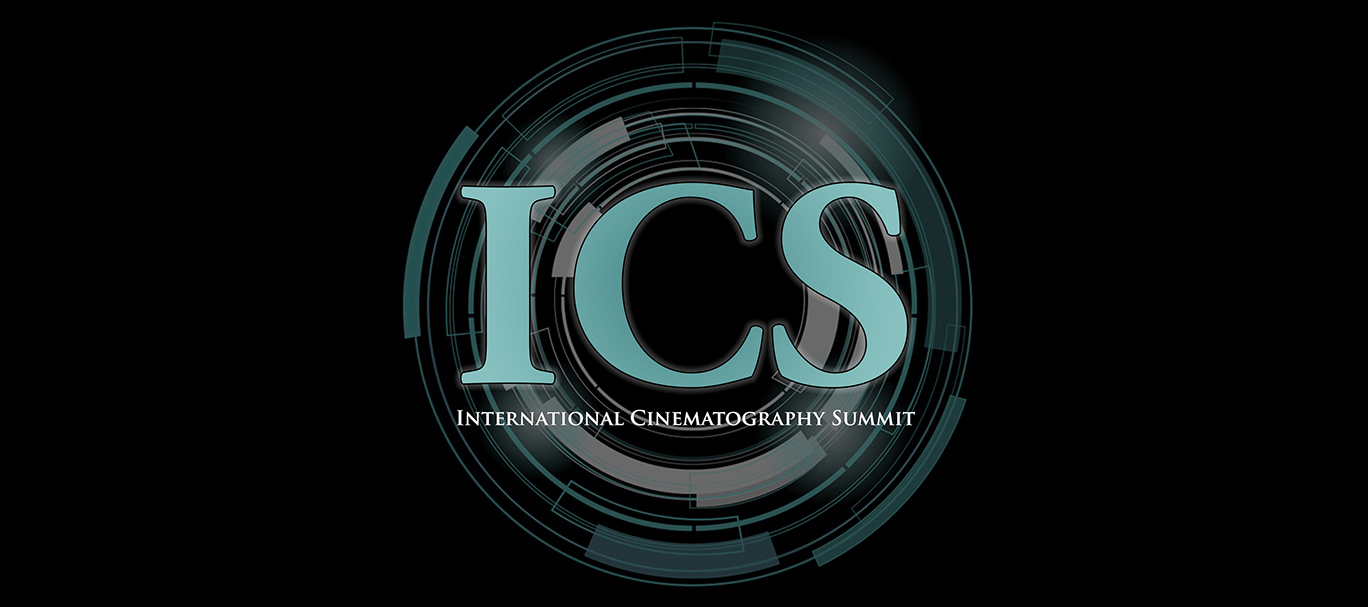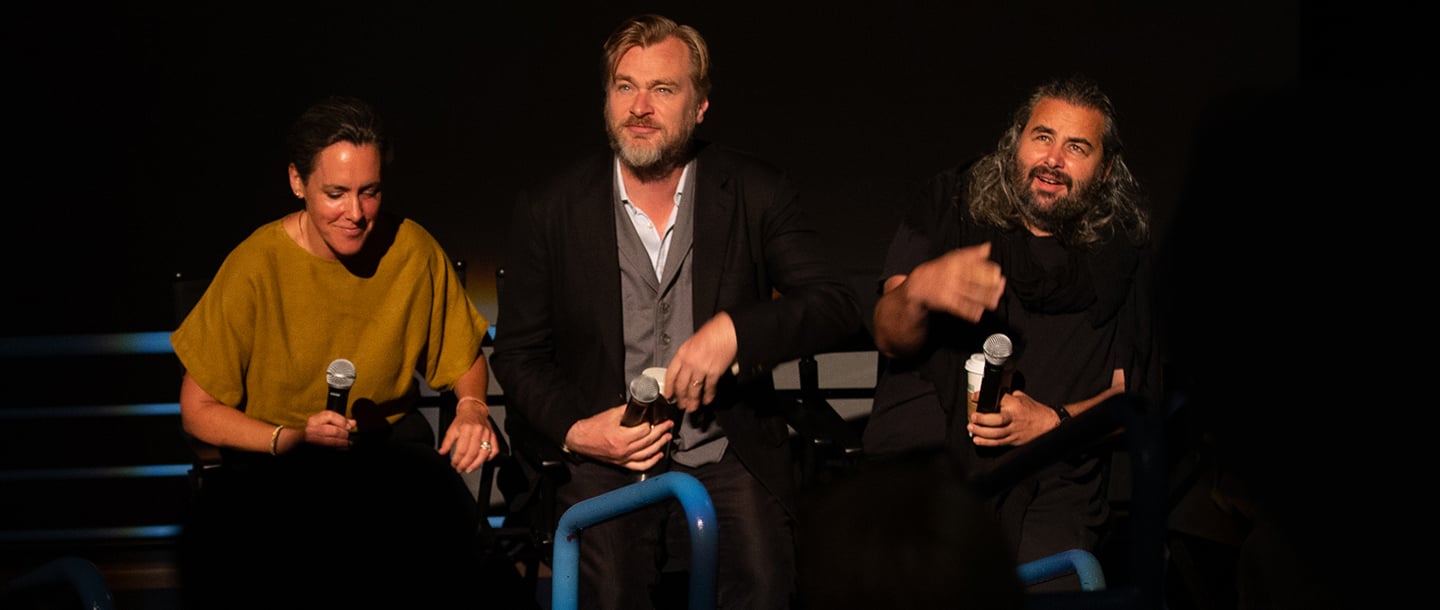
ICS 2018 — Large-Format Work for Dunkirk
Director-producer Christopher Nolan, Hoyte van Hoytema, ASC, NSC, FSF and producer Emma Thomas discuss their World War II drama, Imax and shooting 65mm film.
For this unique four-day event, the American Society of Cinematographers invited peers from around the world to meet in Los Angeles, where they would discuss professional and technological issues and help define how cinematographers can maintain the quality and artistic integrity of the images they create.
Director-producer Christopher Nolan, Hoyte van Hoytema, ASC, NSC, FSF and producer Emma Thomas discuss their World War II drama, Imax and shooting 65mm film.
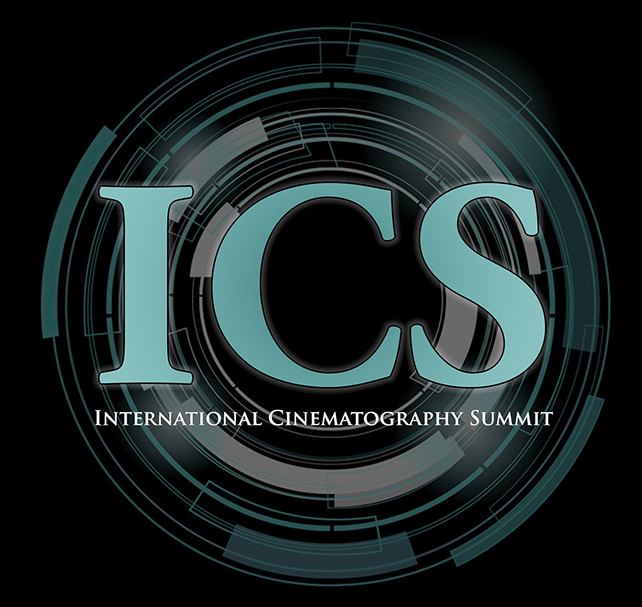
On June 4, the first day of the 2018 International Cinematography Summit, attendees boarded buses for a trip to the AMC Universal CityWalk multiplex, where they watched a screening of Dunkirk in Imax — the way that director-producer Christopher Nolan, cinematographer Hoyte van Hoytema and producer Emma Thomas intended it be seen.
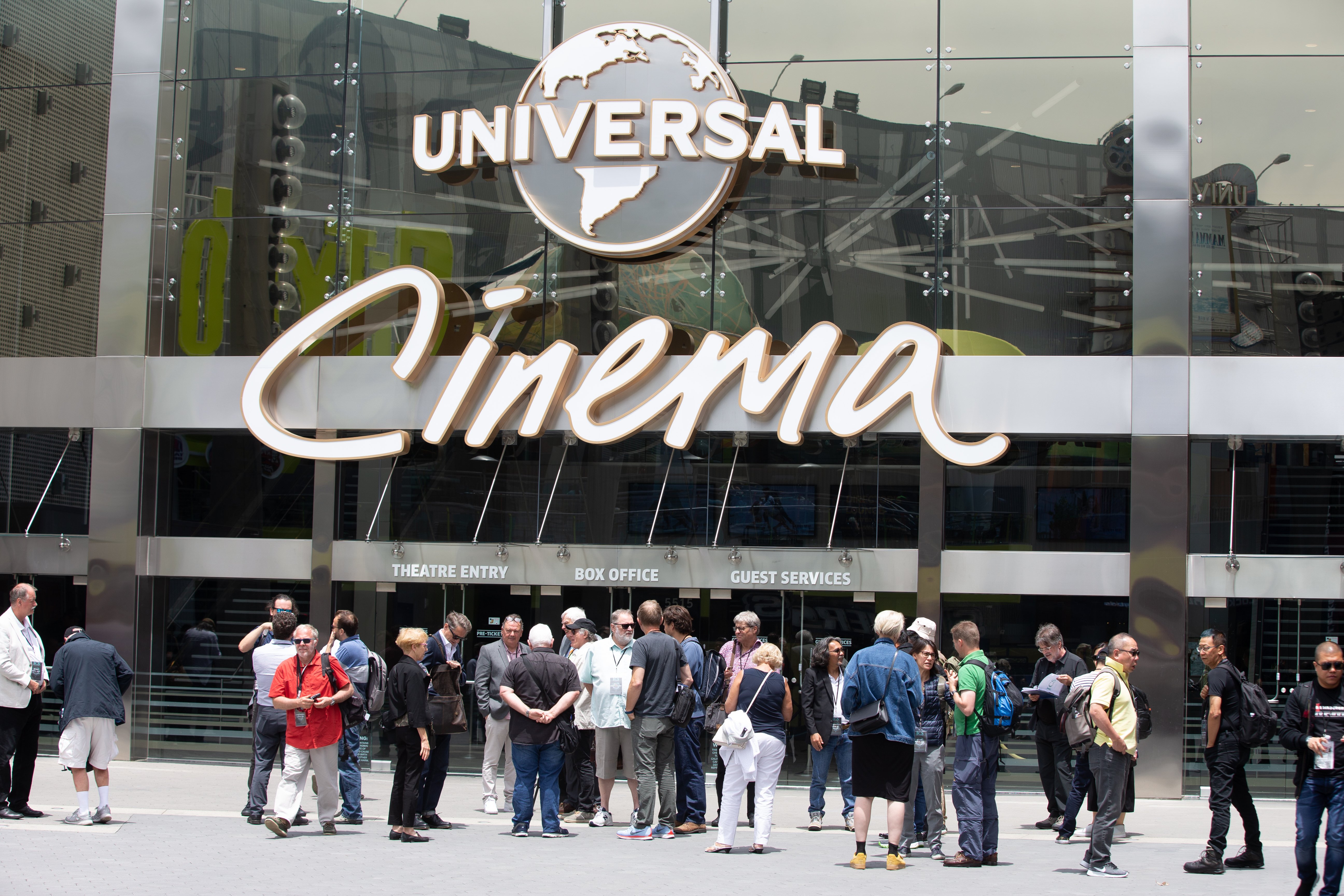
After the screening, American Cinematographer contributor Jim Hemphill led a conversation with Nolan, van Hoytema and Thomas about their project. “The first time we used Imax was 10 years ago, on The Dark Knight [shot by Wally Pfister, ASC],” said Nolan. “We looked at different options and decided to shoot as much as possible with Imax cameras in 15-perf 65mm. After Hoyte and I worked on Interstellar, we wanted to try to shoot the whole thing large format, as much as possible on film. It was also the first time we were able to do an all-photochemical finish on a large-format production, a process we took years to develop.” (You can read more about that here.)
In post, editor Lee Smith, who has cut seven films with Nolan, found ways to embrace the shifted aspect ratio in the cut. “With 20-foot lambert projection in Imax, you don’t need to mask it,” said Nolan. “The limitation with Imax,” he added, is not picture but sound: “It’s way too loud for quiet scenes.”
For Hoytema, “the bigger the format, the more pure and more naturalistic the outcome. It’s a clear and clean window to the world. Life captured by 65mm has such a richness that I don’t always feel as compelled to tweak or push things in a certain way. It looks beautiful in 65mm and you can feel more relaxed as a cinematographer.”
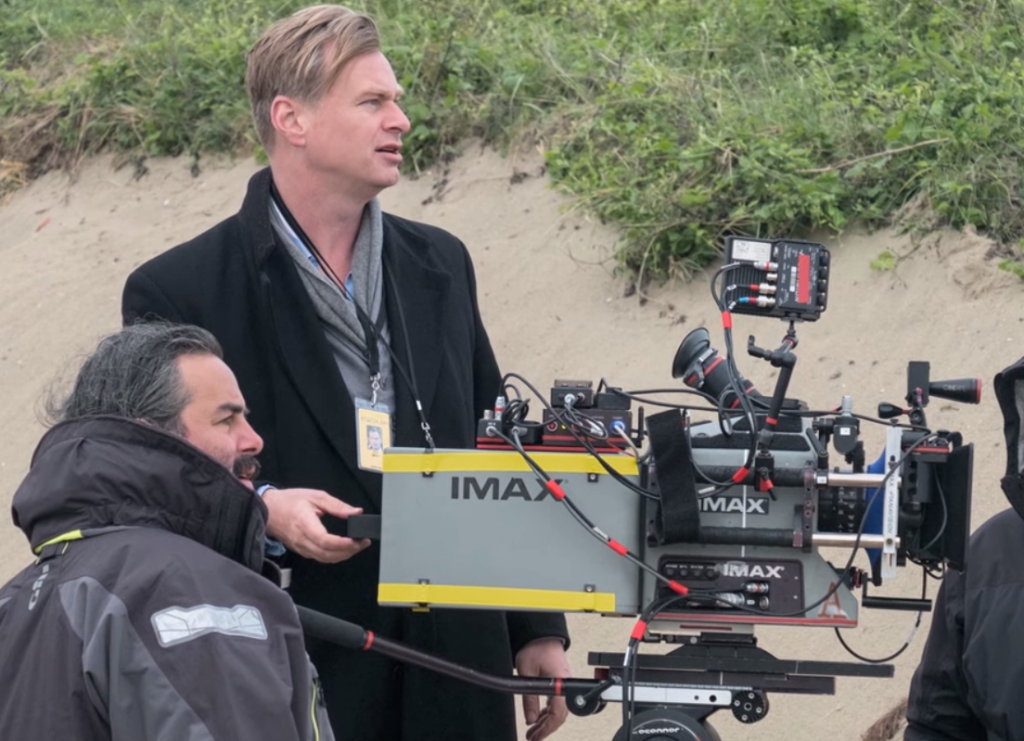
He recalled in shooting Dunkirk being on the beach on day during the production and starting to “fiddle with a bounce board. But the rushes don’t look better. You don’t need little extra pushes. You can let that go.”
Nolan agreed, noting that, “manipulations tend to be too obvious.”
Thomas said that when she looks at Dunkirk, she thinks about what it would be if it had been shot any other way. “Before Chris and I even talked about formats, he said he wanted it to be experiential,” she says. “He wanted people to be there with the characters. The logical next step was, of course, to shoot on large format, which is the most immersive.”
The ICS attendees agreed; during the break between the end of the screening and the beginning of the panel, several openly marveled at how different it was to watch Dunkirk in Imax as opposed to any other format it has been exhibited in.
Hemphill asked van Hoytema how the Imax projection differs from the DCP or 35mm formats distributed widely. “It’s different because it’s the theater where you’ll get the closest to how this film was captured,” he explains. “It preserves the highest amount of resolution.”
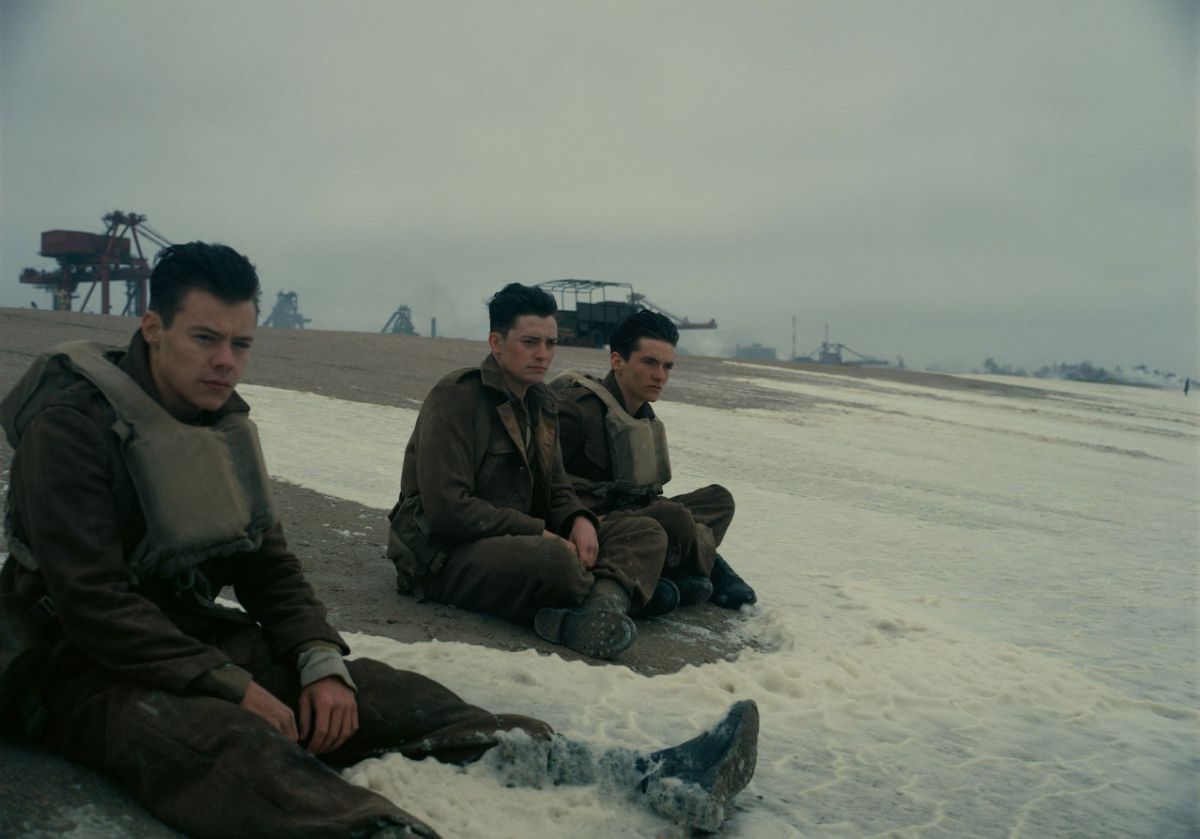
Nolan reported that Imax has been “a fantastic partner,” especially by maintaining venues that can project 70mm film. “We had the widest 70mm film release that’s been done in 25 years, with 138 theaters worldwide,” he said. “That means, if you’re in L.A., this is the place to go.” He added that another benefit of a 70mm release is that, “your negative is a strong basis for all other versions. We put out 70 different [exhibition format versions]. By the time you get to laser projection, when you have that original negative, you feel confident about the translation.”
Asked about the costs of shooting 65mm, Thomas responded that they are “in the fortunate position of not having to argue for film. It’s pretty well known that you’ll have to drag the film camera from his [Nolans’s] cold dead hands. Chris doesn’t have any super powers when he [convinces studios to allow him to shoot in film]. This is just how films have been made forever. The truth is that you can make the numbers work any way you want. I’m not convinced that film is more expensive, although we didn’t do a side-by-side comparison. There are a lot of costs in digital that no one talks about. And film is still the best way to archive.”

Thomas continued that, at one time, it appeared that the infrastructure to support film-based productions was falling apart. “But that’s not true any more,” she said. “There are more labs. If film is the choice you want to make, you can do it.”
Nolan added that, “amortization is the key. When we first shot Imax [on The Dark Knight], we did have to budget, and the number we came up with was enormous – well into the millions. We were able to go to the different divisions of Warner Bros. and got them to contribute — and they got it all back by the end. It’s not a list of realities, it’s a list of priorities. In the transition to a mainly digital world, what’s gone wrong is that our most important tool has been given over to the line producer. The line producer doesn’t determine if it’s a red velvet curtain or a cheaper version — the designer is just reacting to the realities of the budget.”
Van Hoytema stated that he did do a side-by-side comparison between film and digital for a recent commercial. “It turned out that film was X amount more expensive,” he said. “We had calculated using a certain amount of film, but we shot less than that, so it turned out to be the same amount of money.”
Thomas added that Dunkirk was finished “under budget and ahead of schedule.”
Nolan also warned that, with a digital production, “one can’t underestimate the control” of the studio, which “has access to everything, as does the marketing department. They can see your dailies and re-time them any time they want to. Film is more cumbersome from the point of view of studio control, but this is how it was always done.”

Hemphill then asked about the impact of television networks on the production and what level of control they have. “That’s a fascinating question, because, ultimately, one of the things we’ve had to deal with in terms of defending our rights has been the corporate push towards a confluence between TVs and movies,” said Nolan. “That [to them] it’s all content and is irrelevant where you watch it. It removes the idea of theatrical exhibition from the creative process.”
Nolan described having the “pleasure” of re-screening 2001: A Space Odyssey in 70mm as director Stanley Kubrick formatted it, including a musical overture under black. “The presentation of exhibition has always been one of the tools of the filmmaker-director,” he said. “That [it is changing] is really an insidious influence. It’s the tail wagging the dog. Ancillary markets have been part of [film distribution] since the 1950s, but you have to make the initial release as impactful as you can.”
“Yes, the cinematographer has more control with the DI — but so does everybody else.”
But Nolan is optimistic. “We’ve gotten the studios to invest in these as shows, an experience the audience can’t have in the living room,” he said. “People are looking for something different.”
Van Hoytema’s point of view is that it’s “not about protecting film but protecting cinematographers and letting them have creative choice. The whole ‘film vs. digital’ discussion is polarized. It’s made it look like the difference between Hillary [Clinton] and Trump. But you should be able to pick both if it’s a creative choice. Film should exist in the interest of all cinematographers. Even for those who like to shoot digital, it’s a healthier environment.”
Nolan added that, when it comes to protecting the cinematographer’s creative intent, the shift to the digital intermediate has created “confusion in the industry’s mind between technology and how it’s used.” Noting that Dunkirk had no DI work, Nolan said that, “as soon as a film is on a hard drive, a democratization happens in terms of creative control that isn’t good. Any studio executive can have a say. Everyone is suddenly an expert, second-guessing the intentions of the director. It’s not to say that film mystified production, but with film, the industry was more aware that the process required experts and artists.”
Van Hoytema added his opinion about DIs, noting that, “yes, the cinematographer has more control with the DI — but so does everybody else. I love the idea of photochemical finish. You watch the film the way the audience would. In a DI suite, you never grade how you’ll actually see the film. You try not to be [overly strict] about matching things up in a precise way. It’s sometimes messier, but it’s more how the film appeared when you shot it. It’s preserved, not polished away.”
Nolan agreed, noting that Dunkirk was timed to be “spikier.” “It’s tough to overstate the difference of DI timing,” he said. “We were forced to do it for trailers. The process is that the colorist puts a shot up, you make a comment, then the colorist shows choices. It’s not a flow. If you want a stylized look, DI is wonderful. But there is something about the authority of the original negative that makes it all fall together.”
The last question Hemphill asked was the future of film capture and exhibition. “I think as the amount of media out there explodes, the cinema becomes the thing that’s differentiated from everything else,” said Thomas. “People went to see Dunkirk and responded to the experience they had — and I’m hoping studios will listen to that.”
Nolan thinks, “we’ve moved beyond the reductive argument of film vs. digital. There are many more productive conversations.” He added that he’s also “optimistic about the future of shooting with a phone… something many cinematographers have taken up.”
Van Hoytema noted that, for years, “we have had to hear people say that film is still alive but they know it’ll all be gone in five years. More and more people now want to shoot film. It really makes you understand that there is a huge group of young, forward-thinking people who feel the need to preserve film. I’m positive it will find its place in the palette of choices.”
On the exhibition side, Nolan believes there is still a lot more to be done in terms of educating audiences. “We seem to have moved past the idea that digital provides an undistinguishable facsimile,” he said. “There’s a more magical, deep connection that film projection gives you when it’s wonderfully done. Digital projection was about getting rid of the problems of film projection, and the question now is how to get enough [film projectors] back in so people can have this enhanced experience of film. The hope is that by strengthening that, we can show films of the past the way those filmmakers intended them to be seen.”
Go back to the main ICS page.
